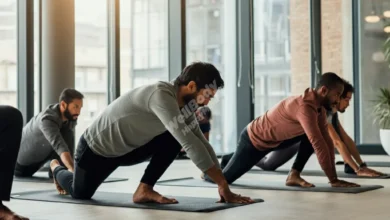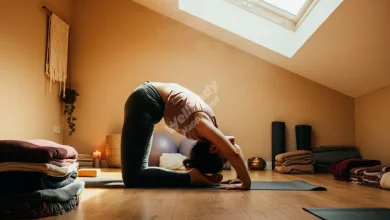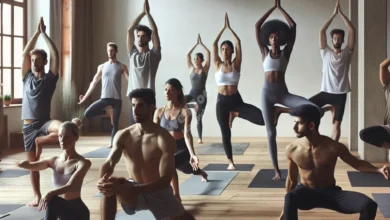Yoga for Kids: Introducing Mindfulness Early On
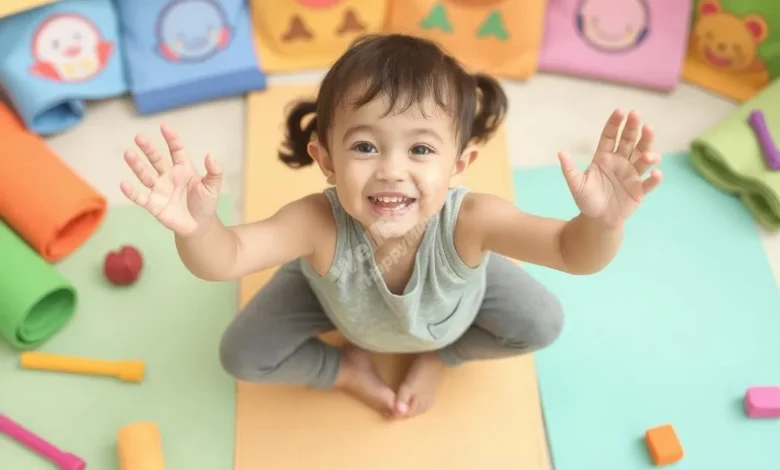
Picture this: Your child is bouncing off the walls with energy. They’re stressed about school and can’t sit still. Sound familiar? Yoga might be the answer you’re looking for. It’s not just for adults anymore. Kids can benefit from yoga too!
Yoga offers both physical and mental benefits for children. It’s suitable for kids aged 3-12. In this article, we’ll explore why yoga is great for kids. We’ll also show you how to get started.
Why Yoga for Children?
Yoga isn’t just about stretching. It’s a powerful tool for kids’ development. Let’s look at the benefits:
Physical Benefits:
Yoga helps kids in many physical ways. Here are some key advantages:
- Improved flexibility: Yoga poses stretch young muscles gently.
- Increased strength: Many poses build strength without weights.
- Better coordination: Balancing poses enhance body awareness.
- Enhanced posture: Regular practice promotes good posture habits.
Kids who do yoga often stand taller. They move with more grace. Yoga also helps prevent future posture problems.
Mental and Emotional Benefits:
Yoga isn’t just good for the body. It’s great for the mind too. Here’s how:
- Better concentration: Yoga teaches focus and attention skills.
- Emotional regulation: Kids learn to manage their feelings better.
- Stress reduction: Breathing exercises calm the nervous system.
- Improved academic performance: Focus skills transfer to schoolwork.
Children who practice yoga often show improved behavior. They handle stress better. Many parents notice better grades too.
Yoga gives kids tools to handle life’s challenges. It teaches them to breathe through difficult moments. These skills last a lifetime.

Getting Started with Kids’ Yoga
Starting yoga with kids can be fun and rewarding. Let’s explore how to begin.
Creating the Right Environment
The right setting makes a big difference. Here are some tips:
- Choose a quiet, open space.
- Use colorful, child-sized yoga mats.
- Keep the area free from distractions.
- Ensure good lighting and ventilation.
Timing is crucial for kids’ yoga. Pick a time when they’re not too tired or hungry. Many parents find that after school works well. Consistency is key. Try to practice at the same time each day.
Safety should always come first. Here are some safety considerations:
- Clear the area of any sharp objects.
- Ensure there’s enough space between children.
- Teach kids to listen to their bodies.
- Avoid forcing any poses.
Making it Fun and Engaging
Kids’ yoga should be playful and engaging. It’s different from adult yoga. Here’s a comparison:
| Adult Yoga | Kid-Friendly Yoga |
|---|---|
| Quiet, serious | Noisy, playful |
| Long holds | Short, dynamic poses |
| Focus on form | Focus on imagination |
| Minimal props | Lots of props and games |
Storytelling can make yoga more fun for kids. Try these ideas:
- Create a yoga story adventure.
- Use animal names for poses.
- Act out favorite books through yoga.
Music and sounds add another layer of fun. Consider these suggestions:
- Use upbeat music for active poses.
- Play calming tunes for relaxation.
- Incorporate animal sounds into poses.

Simple Yoga Poses for Children
Now, let’s explore some easy yoga poses for kids. These are great for beginners.
Beginner-Friendly Poses
- Cat-Cow Pose: Great for spinal flexibility.
- Downward-Facing Dog: Stretches the whole body.
- Tree Pose: Improves balance and concentration.
- Cobra Pose: Strengthens the back.
- Child’s Pose: Calms the mind and body.
Remember, proper form is important. But don’t worry too much about perfection. The goal is to have fun and move.
Fun Sequences
Try these simple flowing sequences:
- Sun Salutation for Kids:
• Start standing tall.
• Reach up to the sky.
• Bend forward and touch your toes.
• Step back into plank.
• Lower to the ground.
• Push up into Cobra.
• Return to Downward-Facing Dog.
• Jump to the front and stand up. - Animal Walk:
• Start as a cat (on all fours).
• Move to cow pose.
• Become a dog (Downward-Facing Dog).
• Slither like a snake (Cobra).
• Hop like a frog.
• End as a butterfly (seated with soles together).
Keep kids interested by changing poses often. Use imaginative cues. For example, “Reach for the stars!” or “Roar like a lion!”
Incorporating Mindfulness
Mindfulness is a key part of yoga for kids. It helps them stay calm and focused.
Age-Appropriate Breathing Exercises
Here are some fun breathing techniques for children:
- Balloon Breath: Imagine inflating a balloon in your belly.
- Bumblebee Breath: Hum like a bee while exhaling.
- Rainbow Breath: Visualize breathing in different colors.
These exercises help kids relax. They also improve concentration. Practice them for 1-2 minutes at a time.
Mindfulness Games and Activities
Try these mindfulness games that combine yoga poses:
- Yoga Freeze Dance: Dance and freeze in yoga poses.
- Mindful Walking: Walk slowly, focusing on each step.
- Gratitude Circle: Share what you’re thankful for in poses.
- Nature Yoga: Mimic nature elements through poses and breath.
These games build attention skills. They’re fun for 5-10 minutes each. Adjust the time based on the child’s age and interest.
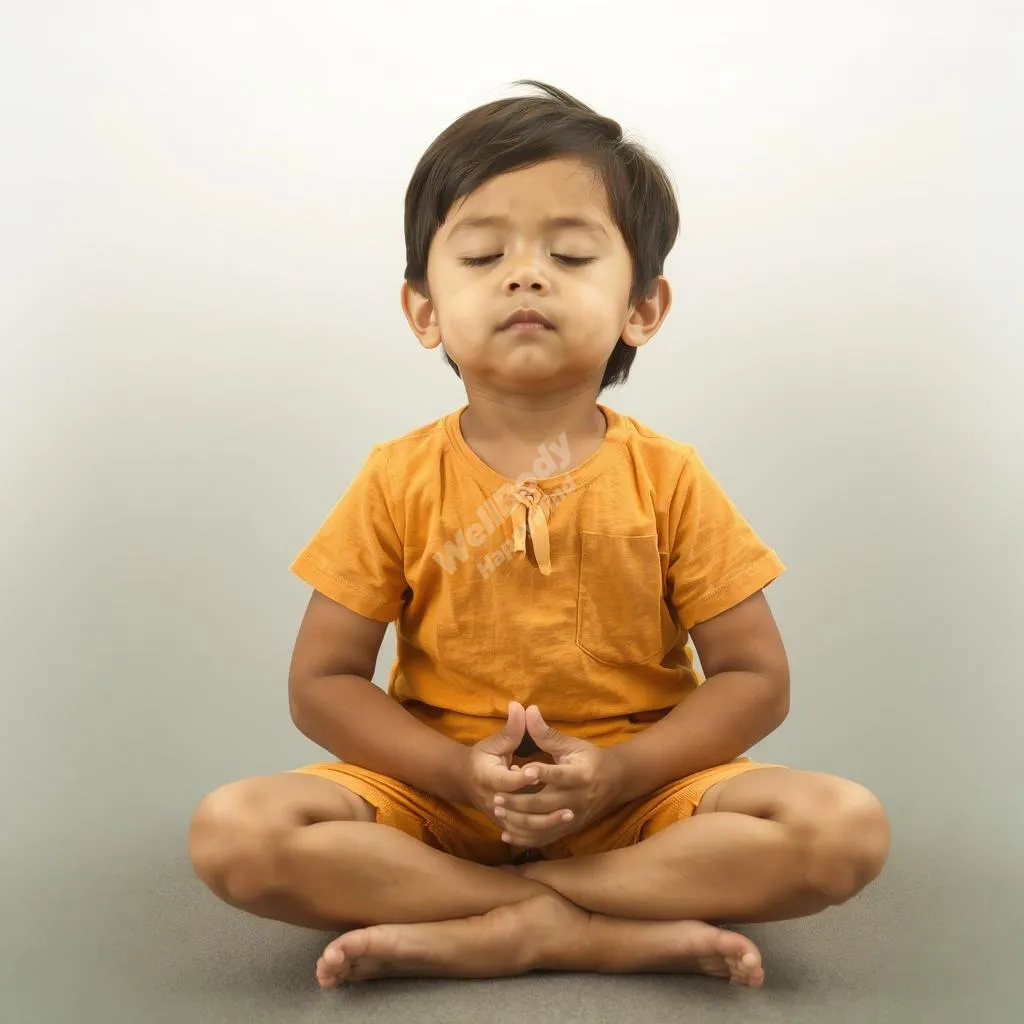
Making it a Family Activity
Yoga can be a great bonding experience for families. Here’s how to make it work:
Tips for Parent-Child Yoga Practice:
- Set a regular time for family yoga.
- Take turns leading poses or sequences.
- Keep it light and fun. Laugh together!
- Praise effort, not perfection.
Ideas for Family Yoga Routines:
- Morning Stretch: Start the day with simple poses.
- After-Dinner Digest: Do gentle twists and forward bends.
- Bedtime Wind-Down: Practice calming poses before sleep.
Benefits of Family Participation:
- Strengthens family bonds
- Teaches healthy habits together
- Reduces family stress levels
- Creates positive shared experiences
Bonding Opportunities:
- Partner poses (like Double Downward Dog)
- Family yoga challenges
- Creating family yoga stories
- Discussing yoga experiences together
Remember, family yoga should be enjoyable. Don’t force it. Let it be a natural, fun part of your routine.
Common Challenges and Solutions
Introducing yoga to kids can sometimes be tricky. Here are some common issues and how to solve them:
| Challenge | Solution |
|---|---|
| Short attention span | Keep sessions brief. Use varied activities. |
| Difficulty with poses | Focus on fun, not perfection. Offer modifications. |
| Lack of interest | Incorporate their favorite themes or characters. |
| Inconsistent practice | Set a regular schedule. Make it a family activity. |
| Comparing with others | Emphasize personal progress, not competition. |
Maintaining consistency is key. Here are some tips:
- Start with short, frequent sessions.
- Use a yoga calendar with stickers for completed sessions.
- Celebrate small victories and improvements.
- Be patient and keep it positive.

Conclusion
Yoga offers numerous benefits for kids. It improves physical health and emotional well-being. It’s a gift that lasts a lifetime.
Here’s a quick recap of the main benefits:
- Better flexibility and strength
- Improved concentration and focus
- Enhanced emotional regulation
- Reduced stress and anxiety
Remember, start slowly. Even a few minutes of yoga can make a difference. The key is to make it fun and consistent.
Ready to give it a try? Start with a simple pose today. Maybe a Cat-Cow or a Tree Pose. Your child’s journey to mindfulness begins now.
Encourage your kids to explore yoga. It’s a wonderful way to grow stronger and calmer together. Why not roll out those mats and start your family yoga adventure today?
